To Camille B.
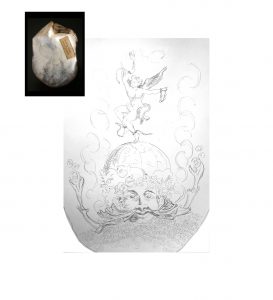
Drawing of an engraved mother of pearl shell by a French convict, New Caledonia, ca. 1879
Back: Angel with broken ankle and wrist chains, holding a torch. The angel is standing on top of a head of a man whose skull represents the common world… There is a signature on the bottom of this image.
Front side: Colonel Gally Passebose, Commandant Militaire who died 3rd July 1878 when trying to suppress a native insurrection in Ourail and Boularpar regions of New Caledonia.
Source (Accessed in 2014, the shell and its description is no longer on the webpage)
“30,000 murdered, 40,000 arrested … After the massacre in May, Thiers made an effort to cultivate barbarism as jurisdiction. More than 100 senior officers were ordered to form eighteen military courts… Isla de Pines had been selected for simple deportation, the Ducos peninsula for deportation to a fortified location … Official publications stated that the deported would enter a rich country, live in relative freedom, receive rewarding work, and find prosperity and happiness there. If desired, their families would be brought to New Caledonia at the expense of the state; if they were still unmarried, they would be supported in starting a family. The parliamentary reporting secretary on the law on conducting the deportation, Monsieur de Haussouville, welcomed this forced emigration before the National Assembly in Versailles as the beginning of a new French empire on the Pacific shores.”
E.R. Greulich: Die Verbannten von Neukaledonien, Berlin / GDR, 1979, p. 39
Hegel, Elements of the Philosophy of Right, Cambridge, 1991
§ 244: This in turn gives rise to the evil that the rabble do not have sufficient honour to gain their livelihood through their own work, yet claim that they have a right to receive their livelihood
§ 247: the sea
§ 248: the means necessary for colonization to which the fully developed civil society is driven
§ 249: and also driven to police and war…
…by the rabble,
which doesn’t stop evaporating to the beat of the production of wealth.
Wealth is a compression of this steam.
Valves must be built for it,
so that it whistles and whistles
when this steam is emitted
into the sea, the land,
into the trains, the camps of people.
So that it whistles and whistles
when this steam is emitted
into the compulsion of each individual.
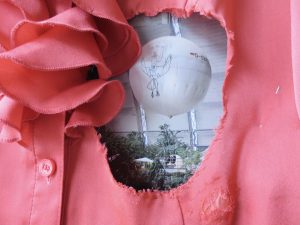
Aerostat with the image of Angelus Novus by Paul Klee, in Tropical Islands, Brand, 2008
a) Tropical Islands is a leisure park in the vicinity of Berlin. It is located on the former Soviet military airfield Brand and is operated by the Malaysian corporation Tanjong in the former Cargolifter shipyard. Tropical Islands is the largest roofed leisure park in Europe. It features hills with jungle vegetation, temples, corrugated-iron huts, tents for staying overnight, and beaches. There are balloons in which one can float through the hall. Cash has been abolished. People pay with electronic wristbands. Tropical Islands is always open.
b) Cargolifter was one of the most spectacular projects of the transformation economy during German reunification. Airships able to transport loads of up to 160 tons from continent to continent were to be produced. This was to enable large-scale projects in regions without transport connections. It was to facilitate the “development” of these regions. What does “development” mean?
c) The West German government describes the former GDR as a desert land that is to be transformed into a “green pastures” through the privatization of state property. This privatization is not a “spontaneous” process, but extremely subsidized. It addresses large West German and European corporations. In 2002 Cargolifter becomes insolvent. The hangar is purchased in 2003 by Tanjong for 17.5 million euros.
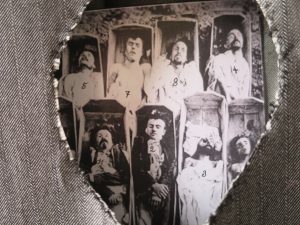
Unidentified photographer, Executed communards, Paris, May 1871, in: Stewart Edwards, The Paris Commune, 1871, Chicago, 1971, source
2,901 writers
2,683 carpenters
2,664 locksmiths, mechanics
2,233 masons
1,938 shoemakers, leather workers
1,265 staff members
1,049 stonecutters, sculptors
1,022 painters, wallpaper workers
925 bookbinders, printers
884 tailors, hatters
206 seamstresses
690 goldsmiths, gilders
179 clockmakers
106 teachers
Statistik des Terrors der Maiwoche, 1871 (Statistics of Terror in the Week of May, 1871), source
By way of thanks for the help in crushing the Parisian Commune, the French government sends gilded canon barrels to Berlin. Germany is proclaimed a nation in the Hall of Mirrors of Versailles, by generals in an occupied country. This proclamation is termed a “revolution from above.”
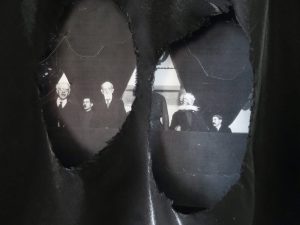
French communards in a meeting in Moscow, 1917
John Milner, Art, War and Revolution in France 1870 – 1871, New Haven, London, 2000
Marx: Capital,
Volume 1, Part VIII, Chapter 33
following Chapter 26, The Secret of Primitive Accumulation
in which Wakefield must be lambasted,
his theory of systematic colonization,
and that
precisely after
this truth about capital realizing itself
(which necessarily marks its end)
was proven
in the case of Europe
one cannot but do this and
project this process of ending
like a sublime natural spectacle
image by image
onto the world
But that cannot
it simply does not think
the repeatability of this process
that is constant
and returns to the sender.
That there is no end to exploitation,
that utilization always continues
and intensifies
in every region, every grain, in every fiber,
and in the coercion of every individual
And intoxicated by the grandiose mechanism of decline
it does not
it cannot think
the wrong resistance
in every region, every grain, in every fiber,
in everyone.
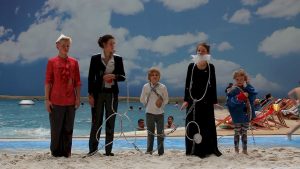
Alice Creischer, Für Camille B. / To Camille B., 2016, HD Video as part of a mixed media installation, 24:40 minutes (Still)
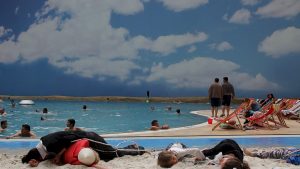
Alice Creischer, Für Camille B. / To Camille B., 2016, HD Video as part of a mixed media installation, 24:40 minutes (Still)
About
Für Camille B./To Camille B. (2016) is a mixed media installation by Alice Creischer, consisting of single channel HD video (16:9, color, silent), 5 costumes, collage, 24:40 min, Dimensions variable.
Alice Creischer studied Philosophy and German Literature at the University Düsseldorf and art at the Kunstakademie Düsseldorf. Since the 1990s, in addition to her own artistic work, she has written together with Andreas Siekmann in various art magazines and curated long-term collective exhibition projects, ExArgentina (Museum Ludwig Cologne, 2004 and Palais de Glace, Buenos Aires, 2005) and Principio Potosí (Museo Reina Sofia, Madrid, Haus der Kulturen der Welt, Berlin, 2010 and Museo Nacional, / Museo Ethnografia, La Paz, 2011).
Recent publication: The Potosí Principle Archive, published by the Walther König, 2022 consisting of four volumes. Its themes are: Extractivism, Labor, Debt, Inquisition, Machine Capitalism, Decolonization Practices, and artistic Doing.